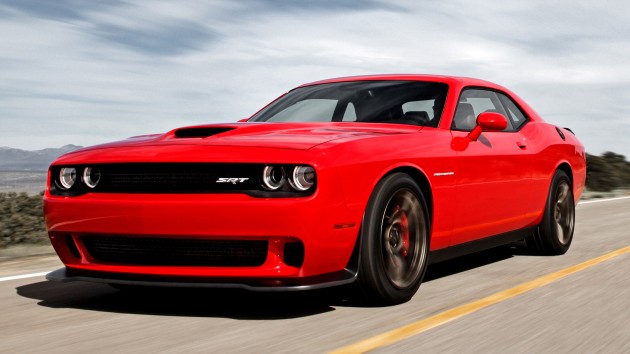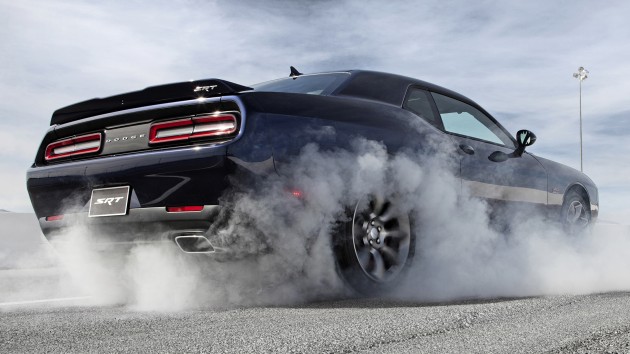
The Dodge Challenger SRT has been given a timely nip-and-tuck for the 2015 model year after six years on the market. The tweaks bring the looks of the pumped-up muscle car in line with the regular Challenger models, but also up the performance to the levels only seen by serious machinery such as the Ford Mustang Shelby GT500 and the Chevrolet Camaro ZL1.
The SRT is distinguishable from the rest of the range through a deeper front splitter, a power bulge on the aluminium bonnet with dedicated cold-air intake and unique 20-inch wheels, while the interior gets a new "Dark Engine Turn" finish on the aluminium trim, a flat-bottomed SRT-branded steering wheel and optional performance seats with larger side bolsters embroidered with the SRT logo.
But the changes go more than just skin deep. The standard SRT model features a revised 392 HEMI 6.4 litre naturally-aspirated V8 (the same engine as on the Scat Pack and Scat Pack shaker models) producing 485 hp and 644 Nm, 15 hp and 7 Nm more than before.

The big news, however, is the new Hellcat (yes, really) 6.2 litre supercharged HEMI V8 that delivers what Dodge claims to be over 600 hp, making it the most powerful Chrysler Group V8 ever produced. It is so powerful that owners are even provided with a separate valet key that clips performance. Both engines can be specified with either a six-speed manual or a TorqueFlite eight-speed automatic transmission.
In addition, the SRT Hellcat is fitted with 275/40 Pirelli P-Zero Nero tyres all around with a special Y-Plus speed rating, as well as a Brembo braking system with 390 mm discs and six-pot callipers at the front.
Hellcat models are set further apart through a new front fascia, dual air extractors on the bonnet, an Air Catcher intake integrated into the left parking light, "Supercharged" fender badges, a taller rear spoiler, 20-inch lightweight forged wheels finished in dark bronze, "Hectic Mesh" finish on the aluminium interior trim as well as red instrument gauges.
Power output, transmission shift speed for the automatic, steering, traction control and suspension settings can all be customised for both models through the Drive Modes feature, controlled through the car's Uconnect system. Three preset modes – Default, Sport and Track – are available, as well as a user-configurable Custom setting.


No comments:
Post a Comment